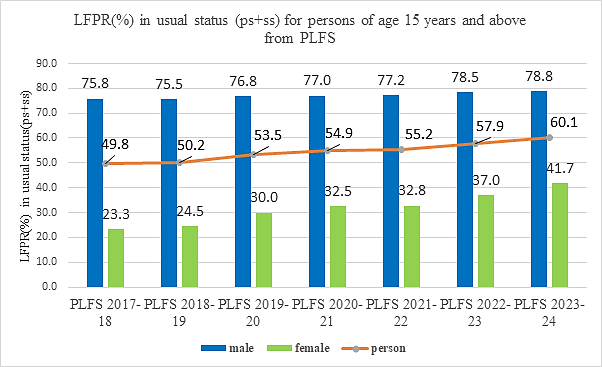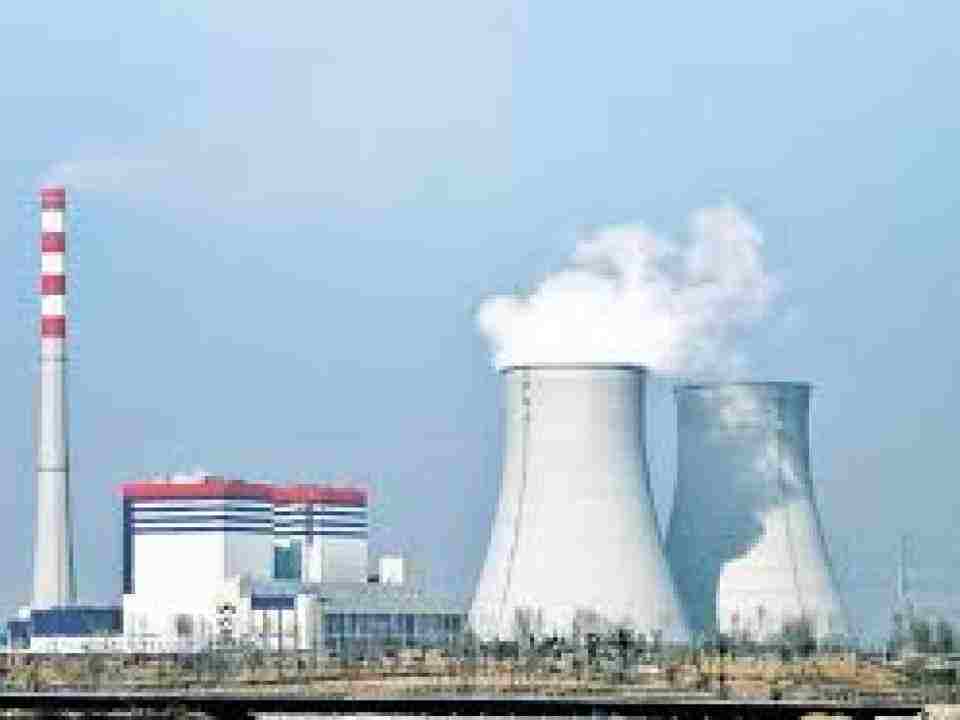- Courses
- GS Full Course 1 Year
- GS Full Course 2 Year
- GS Full Course 3 Year
- GS Full Course Till Selection
- MEP (Mains Enrichment Programme) Data, Facts
- Essay Target – 150+ Marks
- Online Program
- GS Recorded Course
- NCERT- First Ladder
- Polity
- Geography
- Economy
- Ancient, Medieval and Art & Culture AMAC
- Modern India, Post Independence & World History
- Environment
- Governance
- Science & Technology
- International Relations and Internal Security
- Disaster Management
- Ethics
- Current Affairs
- Indian Society and Social Issue
- CSAT
- 5 LAYERED ARJUNA Mentorship
- Public Administration Optional
- ABOUT US
- OUR TOPPERS
- TEST SERIES
- FREE STUDY MATERIAL
- VIDEOS
- CONTACT US
Periodic Labour Force Survey (PLFS) Report 2023-24
Periodic Labour Force Survey (PLFS) Report 2023-24
- In September 2024, the National Statistical Office (NSO) released the Periodic Labour Force Survey (PLFS) report for 2023-24.
- It highlights key employment trends in India, including stagnating unemployment rates, increasing labour force participation, and the challenges of creating formal jobs despite significant economic growth.
Key Highlights of the PLFS Report 2023-24
- Stagnant Unemployment Rate: The unemployment rate for 2023-24 stayed at 3.2%, unchanged from 2022-23.
- This is the 1st time since the PLFS began in 2017-18 that the unemployment rate has not shown a year-on-year decline.
- Labour Force Participation Rate (LFPR) for persons of age 15 years and above: The LFPR increased to 60.1% in 2023-24, up from 57.9% in 2022-23 at the national level.
- Rural LFPR rose to 63.7% (50.7% in 2017-18) and Urban LFPR increased to 52% (47.6% in 2017-18).
- More people in rural areas are seeking work, possibly due to reverse migration or fewer urban job opportunities after the pandemic.
- LFPR reflects the proportion of people who are either employed or seeking work.
- Increasing Trend in Worker Population Ratio (WPR) for persons of age 15 years and above: In rural areas, WPR increased 62.1% in 2023-24 while for urban areas it increased 49.4%.
- The WPR reached 58.2% in 2023-24 (56.0% in 2022-23).
- Male WPR increased slightly to 76.3% (76% in 2022-23)
- Female WPR increased to 40.3% (35.9 in 2022-23)
- WPR measures the percentage of employed people in the total population.
- Marginal Improvement in Job Quality: A slight improvement in job quality was seen, with salaried or regular wage workers increasing by 0.8 percentage points to 21.7%.
- Decreasing Trend in Unemployment Rate (UR): Rural unemployment rate increased slightly to 2.5% in 2023-24 from 2.4% in 2022-23.
- Urban unemployment rate improved, dropping to 5.1% from 5.4%.
- The overall Unemployment Rate (UR) has remained unchanged at 3.2%.
- Female unemployment rate increased to 3.2%, up from 2.9% in 2022-23.
- Male unemployment rate slightly decreased to 3.2% from 3.3%.
- Rise in Self-Employment and Unpaid Work: The share of people involved in self-employment (including unpaid household work) increased to 58.4% from 57.3% in 2022-23.
- This includes both entrepreneurial ventures and informal work, making it a mixed indicator of job quality.
- Challenges in Creating Decent Jobs: The economy struggles to create enough formal jobs, pushing more people into self-employment, often in the informal sector or unpaid family roles.
- Wage employment remains lower than in the pre-pandemic period, reflecting the challenge of generating formal and secure jobs.
Employment Trends: Positives and Negatives
|
Positives |
Negatives |
|
Labour Force Participation Rate (LFPR) increased |
Unemployment rate remains stagnant at 3.2% |
|
Salaried workers saw a marginal rise to 21.7% |
Youth unemployment is high (10.2%), especially for females (11%) |
|
Worker Population Ratio (WPR) increased to 58.2% |
Increase in self-employment, mostly informal or unpaid |
|
Urban unemployment rate dropped to 5.1% |
Female unemployment rate rose to 3.2% from 2.9% |
|
Workforce participation has risen post-pandemic |
Formal job creation is slow, pushing people into informal roles |

Why India Struggles to Generate Enough Formal Jobs?
|
Challenges |
Solutions |
|
Rising informal jobs reflect a trend towards informalization. These jobs lack protection under labor laws, with no access to social or job security. |
Investments in manufacturing, renewable energy, and technology can create more productive jobs with better wages. |
|
AI and IoT advancements threaten job security, even for skilled workers. Automation in IT firms show how technology can reduce job opportunities. |
Targeted financial support, tax relief, and regulatory ease can help MSMEs recover and expand employment capacity. |
|
More educated job seekers struggle to find suitable employment. The demand for skilled jobs is shrinking, adding to the employment challenge. |
Align skilling programs with future industry needs in areas like green jobs, AI ethics, cybersecurity, and data analytics. |
|
Policies like demonetization (2016) and the poorly implemented GST (2017) hurt MSMEs, which employ most of India’s workforce. |
Focus on sectors like renewable energy, healthcare, and sustainable manufacturing, where automation is less likely to replace jobs. |
|
While the output share of service sectors like transport, communication, and finance remains steady, their employment share has declined. |
Boost new-age service sectors like e-commerce, logistics, and online education, which offer jobs across a range of skill levels. |
|
The share of workers in skilled jobs dropped. Widening inequality and a falling worker-to-population ratio highlight India’s unemployment problem. |
Strengthening MSMEs by providing them with financial support and streamlined regulations to help recover and expand their employment capacity. |
Key Facts About the PLFS Report
Primary Objectives of the PLFS:
Innovations in Sampling Design and Data Collection:
Government’s Initiatives Related to Employment
|
|




